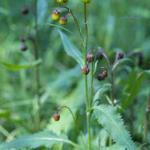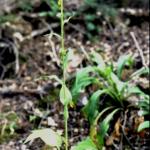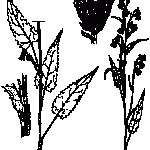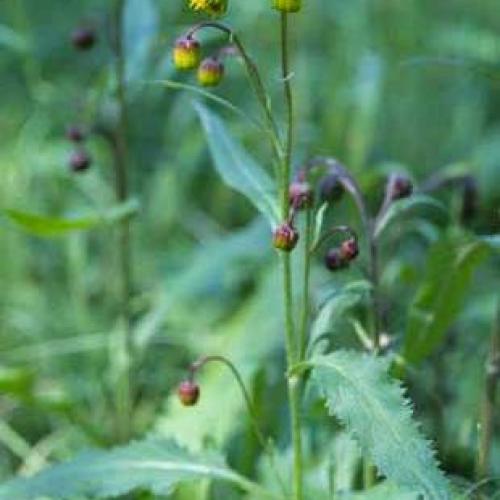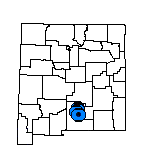Senecio sacramentanus (Sacramento Groundsel)
Family
ASTERACEAE
Synonyms
NONE
Common Name
Sacramento Groundsel
| USFWS | State of NM | USFS | BLM | Navajo Nation | State Rank | Global Rank | R-E-D Code | NMRPTC Status | Strategy Status |
|---|---|---|---|---|---|---|---|---|---|
| S3 | G3 | 1-1-3 | R | SS |
| Overall Conservation Status | Documented Threats | Actions Needed |
|---|---|---|
| UNDER CONSERVED | No Information |
document rarity |
Description
Perennial herb; stem up to 7 dm tall, leafy throughout, but the leaves progressively reduced upwards; leaves bright green, thin, lanceolate to narrowly triangular, up to 14 cm long and 5 cm wide, those at the base with petioles up to 7 cm long, the stem leaves sometimes without petioles often clasping the stem, abruptly sharp pointed at the tip, margins coarsely toothed, upper surface glabrous, lower surface sparsely pubescent; flower heads about 10 mm high and nearly as wide, nodding; phyllaries narrow, in one series; ray flowers absent; disk flowers yellow, numerous; pappus of numerous capillary bristles. Flowers July to September.
Similar Species
Senecio bigelovii is widespread in New Mexico. It is more robust than S. sacramentanus and has flower heads that are usually more than 1 cm wide.
Distribution
New Mexico, Lincoln and Otero counties, Sacramento-White mountains.
Habitat
Meadows and aspen glades in lower and upper montane coniferous forest; 2,440-3,350 m (8,000-11,000 ft).
Remarks
This species is distinguished from Senecio bigelovii by relative thickness of flower heads and stems. Intermediate and undeterminable populations in the Mogollon, Manzano, and Sandia mountains have led to some specimens from there being identified as S. sacramentanus. The taxonomic circumscriptions of these two species needs clarification. The questionable taxonomic status of S. sacramentanus has made it a low priority for conservation concerns.
Conservation Considerations
Distribution, frequency, and population sizes of this species have not been assessed. Its response to livestock grazing, logging, and forest fire have not been studied.
Important Literature
*New Mexico Native Plants Protection Advisory Committee. 1984. A handbook of rare and endemic plants of New Mexico. University of New Mexico Press, Albuquerque.
Barkley, T.M. 1978. Senecio. In: North American flora, series 2. 10:50-139.
Information Compiled By
Robert Sivinski 1999
For distribution maps and more information, visit Natural Heritage New Mexico

